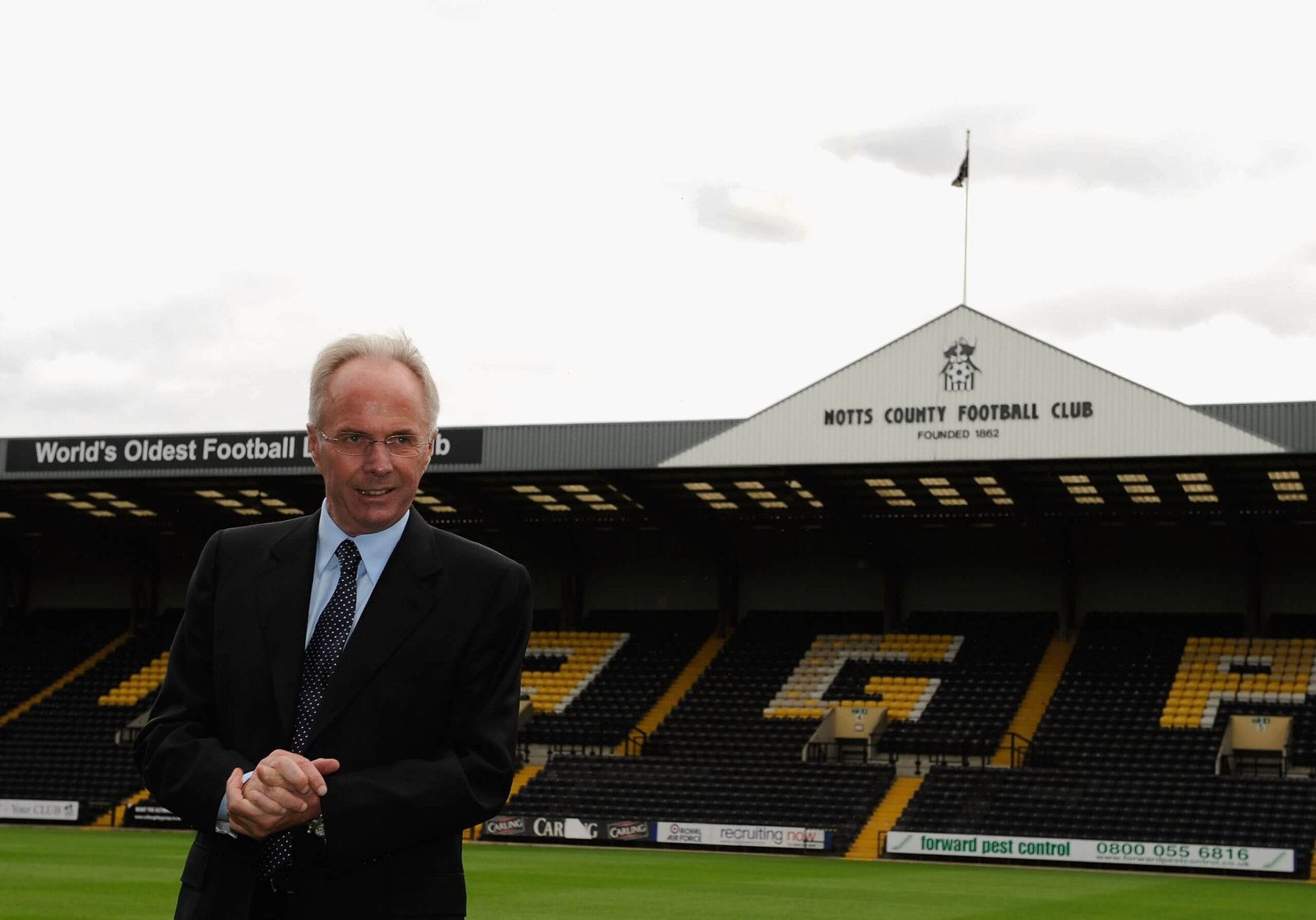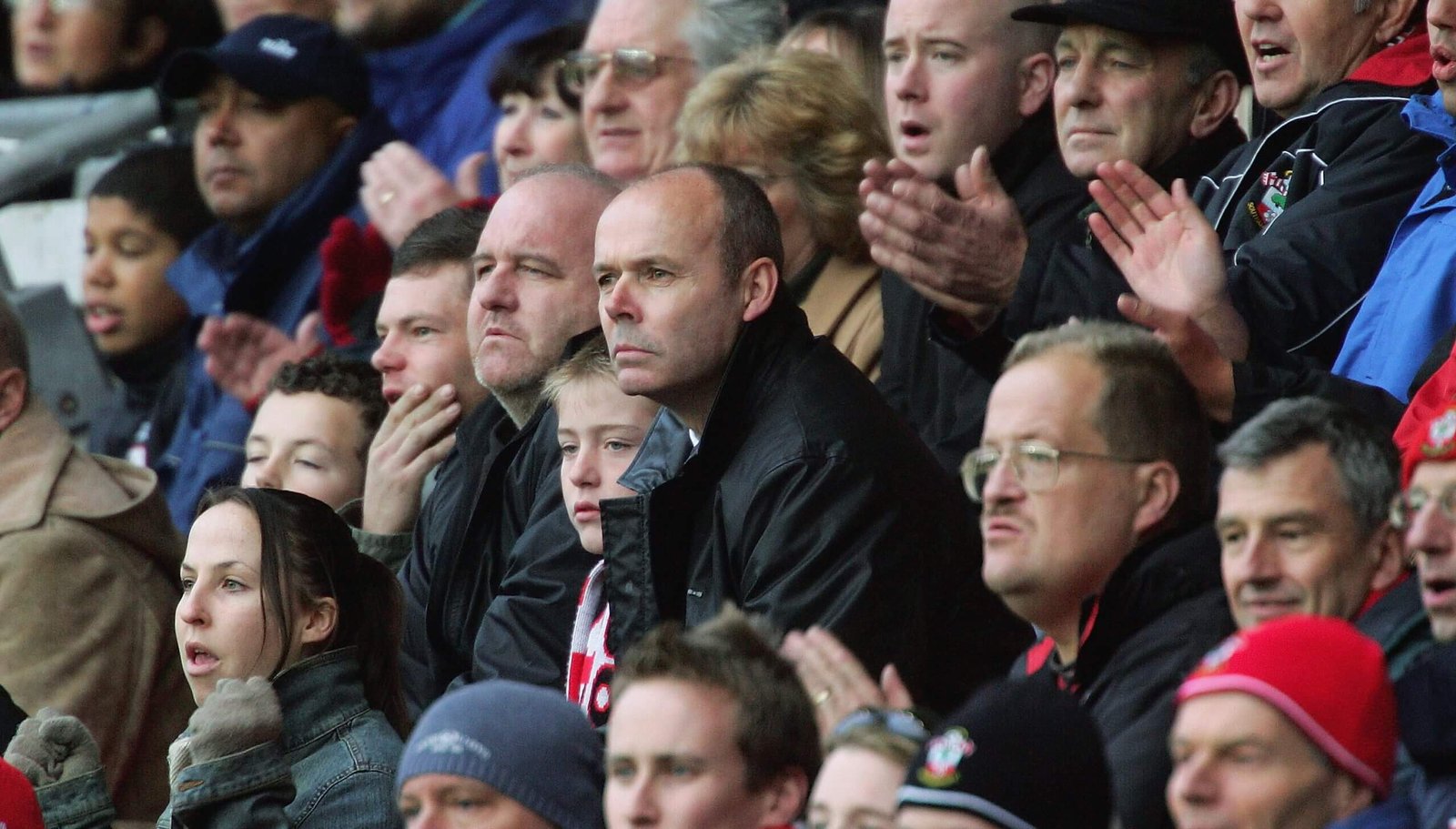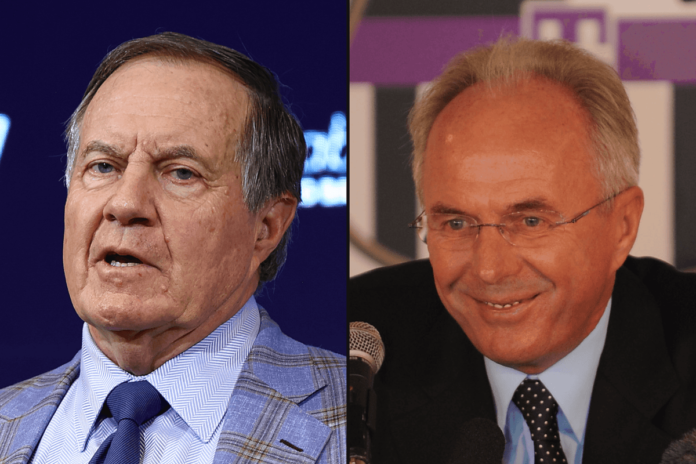Bill Belichick, a six-time NFL Super Bowl champion head coach, sent shockwaves through American sports media on Wednesday by agreeing to take charge of the North Carolina Tar Heels football team.
The Tar Heels belong to the University of North Carolina at Chapel Hill. In essence, Belichick is trading in the opportunity to apply for a job coaching the world’s most talented American football players to head up an amateur programme of college students.
At the Patriots, where he was the head coach for 23 years before parting ways in 2023 after his worst season in charge, Belichick worked with hall-of-fame talents Tom Brady, Rob Gronkowski and Randy Moss. As Tar Heels head coach, most players on his roster will leave the sport behind at a competitive level after graduation. National media and fan interest in Belichick’s fortunes will be high, but it’s a very different role from a coaching standpoint.
Drawing comparisons between gridiron football and soccer is not straightforward as they operate in entirely different sporting spheres, but there are similarities between Belichick and Alex Ferguson. Like the Patriots, Manchester United were the dominant team of their era, but while Ferguson walked away from management aged 71 after leaving United in 2013, Belichick, 72, is entering an entirely different landscape. In the soccer world, it’s comparable to dropping down the leagues.
The Tar Heels are a historic programme across various American college sports, and while they are better known for their accomplishments on the basketball hardwood than on the gridiron, Belichick may still come across players with the potential to star in the NFL. Drake Maye has had a promising start to life at the Patriots after being drafted third from North Carolina this year. Still, UNC’s football team have not won their conference since 1980 and are currently ranked 59th in the country by The Athletic.
Belichick coaching the Patriots last December (Maddie Meyer/Getty Images)
Instead of enticing players with a winning record, trophies, and the chance to play alongside legends like Brady, Belichick will now have to convince highly ranked recruits between 18 and 22 to play for a programme that has had limited recent success under a coach who has never presided over a college game.
Here, The Athletic looks at coaches and managers who have made decisions similar to Belichick’s in the soccer world.
Sven-Goran Eriksson
By the time Sven-Goran Eriksson joined Notts County as director of football in July 2009, his stock was nowhere near as high as it was when he left Lazio to take the England job in 2001. Still, Eriksson’s decision to leave the sport’s elite level for a club in the fourth tier of English football was no less surprising.
Eriksson was considered among the best managers in the world when he departed Italy, winning the league title with Lazio in 2000, along with six cups. Then, after steering England to the quarter-finals at three successive tournaments from 2002 to 2006, Eriksson took the Manchester City job for the 2007-08 season and guided them to a ninth-place finish in the Premier League and qualification for the UEFA Cup.

Eriksson at Notts County (Laurence Griffiths/Getty Images)
By the following summer, he had accepted a move to League Two side Notts County, who sold the Swede with a big-money contract and a devotion to taking the world’s oldest professional club back to the top flight.
Though his time in the boardroom brought success on the pitch, the club’s heavy expenditures resulted in large debts the owners did not pay. By the time Notts County’s promotion to League One was confirmed in May 2010, Eriksson was already out the door, walking away from his role in February.
Anson Dorrance
In 2024, it would seem ludicrous if Emma Hayes split her time between the USWNT job and a college soccer team, but that’s precisely what Anson Dorrance did for eight years.
Over 34 years in charge of the Tar Heels women’s soccer team, Dorrance built arguably the most successful programme in NCAA history. Between 1982 and 2022, his side reached the NCAA Championship game 27 times, winning 21 of those finals — the most Division 1 championships by a coach in any sport. Remarkably, he also coached the USWNT between 1986 and 1994, winning the first Women’s World Cup in 1991.
Due to Dorrance’s dominance in college soccer, he would not have been short of offers to coach in the professional game during his spell at North Carolina, but he stayed true to UNC until his retirement this year.
During his tenure, he coached 59 players who eventually played for the USWNT. Mia Hamm, considered one of the USWNT’s greatest players, won four NCAA national championships and the first of two World Cups under Dorrance.
Clive Woodward
While the differences between NFL and college football are so stark that they’re often referred to as being like different sports, it does not compare to switching rugby for soccer.
After leading England to the World Cup in 2003, Clive Woodward made the surprising decision to trade elite-level rugby for the performance director role at Southampton, who were then in English football’s second tier. Woodward, who had dreamed of being a professional footballer before earning 21 appearances for England’s rugby team, entered the role with innovative ideas but failed to replicate his impact as a rugby coach at Southampton.
During his year in football, he earned his UEFA B Licence and planned for a future in management. Despite not being offered the job at Southampton after Harry Redknapp’s dismissal in 2005, he did receive and consider proposals from MK Dons and Wycombe Wanderers. However, he rejected the opportunity in football management to become the director of sport for Team GB ahead of the 2012 London Olympics.
“My kids tell me I was like Ted Lasso,” Woodward told The Athletic in 2021. “If that show had come out in 2004, I would have been him coming in from rugby.”

Woodward at a Southampton game (Mike Hewitt/Getty Images)
Terry Venables
After largely successful periods in charge of Barcelona, Tottenham Hotspur and England, many would have expected Venables to attract one of the Premier League’s top jobs after returning to British shores in 1998 from two years coaching the Australia national team.
Instead, Venables returned to Crystal Palace, who were then in England’s second tier, the club where he started his managerial career.
He arrived at his second stint in charge in high spirits, as local millionaire and boyhood fan Mark Goldberg had recently bought the club with aspirations to win promotion to the top tier. Early results were mixed, with a 4-0 home defeat to Barnsley in September among the low points of his short tenure. Still, Palace showed potential under Venables, beating Norwich City 5-1 in October and scoring four in wins against Portsmouth and Bury.
However, Venables was not given the time to find consistency due to financial problems, lasting half a season in charge of the south London club. A few months later, the club was put into administration.
Palace finished 14th and remained in the second tier for five seasons before winning promotion back to the Premier League via the play-offs in 2003-04.
Mark Hughes
After being dismissed by Southampton in 2018 after less than a year in charge, Mark Hughes’ prospects of managing his seventh Premier League club appeared slim. Still, few would have expected him to drop down to the fourth-tier Bradford City when he eventually returned to coaching following a four-year hiatus.
For over a decade, Hughes was a fixture on Premier League touchlines. Blackburn Rovers was his first job in England’s top flight, recording sixth and seventh-place finishes across four years in Lancashire. After shorter spells in charge of Manchester City, Fulham and Queen Park Rangers, Hughes took over from Tony Pulis at Stoke City in 2013 and was credited for developing their style of play from a long-ball team to a side capable of playing passing football with technical players.
Given his reputation as a top-flight manager, it was a shock when Hughes took the reins at Valley Parade in February 2022 — the first time he had managed a club outside the Premier League. He had a solid first full season in charge, taking Bradford from 14th to sixth and qualification for the play-offs.
However, following a poor start to the following campaign, winning just three out of their opening 11 matches, Hughes was sacked in October 2023.
(Top photos: Getty Images)
Read the full article here


